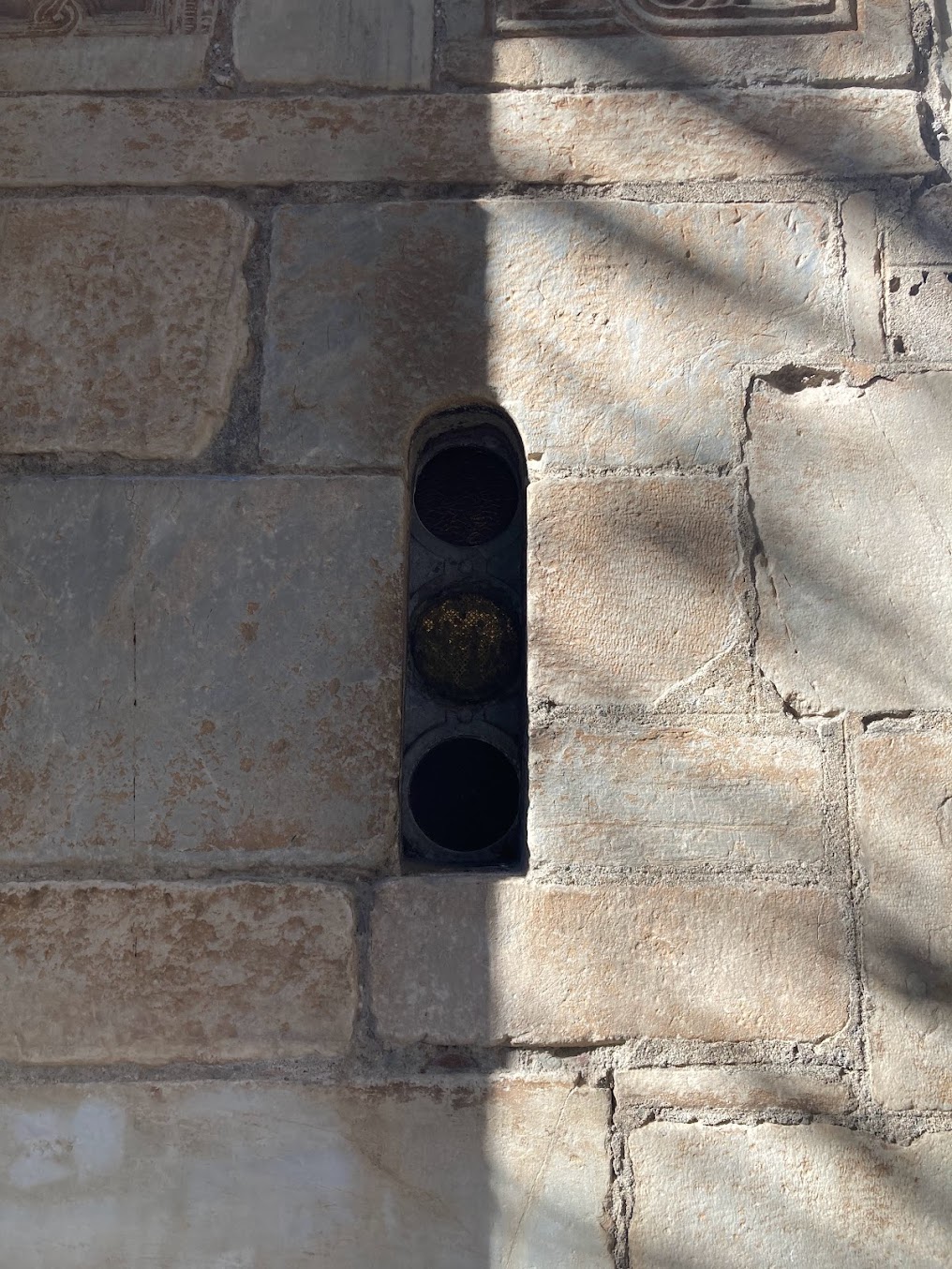Spolia
[spouliə]
Plural Noun
- Spoils
- Stones taken from an old structure and repurposed for new construction or decorative purposes
The Church of Panagia Gorgoepikoos (Πααναγία Γοργοεπίκοος) sits on the south east corner of Mitropoleos square in Plaka, at the centre of Athens. Sometimes called the Little Metropolis Church, it is dwarfed by its neighbour, the imposing and architecturally uninteresting Metropolitan Cathedral of Athens.

Panagia Gorgoepikoos is unique among Byzantine Churches because it is built almost entirely from spolia, marble blocks recycled and reused from various unknown edifices spanning the length of 1500 years, from classical antiquity to the Byzantine era.


Panagia Gorgoepikoos is a patchwork quilt of marble and time.

The spolia that make up the Panagia Gorgoepikoos are a mix of Pentelic Marble and Hymettos Marble. Extracted from Mount Pentelicus just north of Athens, Pentelic Marble was used to construct the parthenon - it is of extremely high quality. Pentelic Marble is a translucent white with yellow undertones, and it shines like gold in the sunlight. Hymettos Marble comes from nearby Mount Hymettos. Lesser quality than Pentelic marble, it was nonetheless popular and widely used in antiquity. Hymettos Marble is blueish gray, with small veins of talc that can sometimes give it a greenish hue.



The foundation of the Panagia Gorgoepikoos is made up of functional ashlar blocks, each approximately 2 feet in height. As it rises towards the windows, the spolia transitions into a rich mix of sculptural stone reliefs.



There are roughly ninety sculptures along the perimeter of the Church, and they display a wide and curious range of imagery, both of ancient and medieval origin:

Above the entrance door, a relief depicts the animal signs of the zodiac alongside figures carrying out activities for each time of the year and corresponding Attic festival.
A Kybele sits on on her throne, framed by floral scrolls, her lions no doubt having wandered off somewhere else along the perimeter.

A castrated satyr appears. Was he castrated before he became part of Panagia Gorgoepikoos, or after? We cannot know his story.
Gryfons and Sphinxes, each in their own relief, adorn a tree of life. These mythological creatures are there to protect us - apotropaia - they ward off evil spirits.




The spolia reliefs face boldy outwards, mishmashed but with geometric clarity. The characters in the reliefs have transcended time, deracinated and meticulously replanted into a new narrative.
They want to be beheld.
